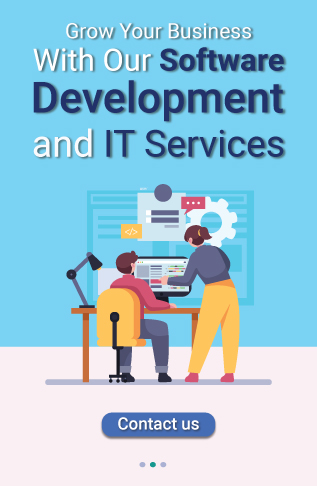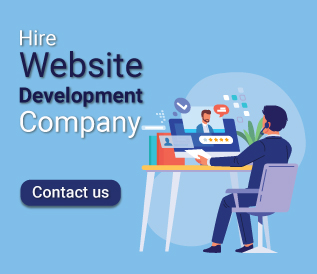Inventions in artificial intelligence have moved as of late, from futuristic conception to becoming the revolutionary elements that will transform ways of doing business, decision-making, and value addition. AI transformation is using AI technologies innovatively in ways that fundamentally change and improve the functioning, offerings, and strategies of a company. It does offer growth, efficiency, and customer satisfaction in various industries.
This guide will cover all you need to know about AI transformation, including what it is, why it matters, how to use it, and the enormous value it can unleash if you’re an IT professional, company leader, or entrepreneur hoping to stay ahead of the curve.
Table of Contents
ToggleWhat is AI Transformation?
AI transformation involves integrating artificial intelligence into your business operations, goods, and services. It is not just about automation; it is also about intelligence. AI does not simply accomplish jobs; it learns, adapts, and makes better decisions over time.
This shift usually includes:
- Creating AI-powered apps that are tailored to specific business requirements.
- Integrating IoT development services to enable real-time monitoring and networking.
- Using Generative AI for creative problem-solving and content production.
- Unlike other technological updates, AI transformation prioritizes continual progress, allowing businesses to remain nimble in an ever-changing market.
Why is AI Transformation Important for Your Business?
The concern isn’t whether to adopt AI- it’s about knowing how quickly you can migrate to it. The reason AI transformation is important are:
1. Use Data Better to Make Decisions
More than that, all businesses will collect data, but with AI applications, this data becomes actionably insightful. AI tools detect patterns, forecast actions, and assist decision-makers in identifying opportunities and threats as they develop in real time.
2. Improve Customer Experience
AI drives businesses to hyper-personalize experience – that is an experience built specifically for each customer. For example,
- AI-propelled chatbots to center on customer inquiries that require instant resolution.
- Recommendation engines suggest products which a customer may wish to purchase.
- AI now assists businesses in predicting what customers want before they need them.
3. Increase Operational Efficiency
AI spot paints wasted effort in duplicative work, poor allocation of resources, and failure to predict when maintenance is required timely. Combined with IoT development services, AI turns on a criterion-based monitoring system with real-time feedback for continued operations.
4. Competitive Advantage
Not for tech giants only. Small businesses and start-ups are today leveraging AI to rapidly scale up and compete with the big players. The companies that embrace AI now will lead their industries tomorrow.
5. Where Innovation Is Sparked
New products can be created through inputs using Artificial Intelligence such as Generative AI. It makes prototyping faster while reducing marketing costs because companies can use AI to help with marketing campaign design. AI becomes a helper of creativity through mundane tasks, freeing teams for essential big ideas.
Core Technologies Driving AI Transformation
AI transformation comes with different technologies involved simultaneously. These are the top ones that will have great effects:
1. AI Development Services
Custom AI development services enable businesses to create solutions that are tailored to their needs-for example AI apps for client engagement, analytics tools, or intelligent automation systems.
2. IoT (Internet of Things)
IoT connects devices and systems and makes it possible for real-time data sharing. IoT development services are a significant boost to how efficient AIs can be given constant streams of data through which they run analyses via applications in:
For example:
- In manufacturing, IoT well-being status sensors are installed in age equipment.
- In retail, IoT tracks levels of inventory and foot traffic towards clientele.
3. Generative AI
Generative AI refers to specific forms of AI that generate new content, whether text, images, videos, or even just ideas. It is already being applied in industries such as marketing, entertainment, and product design. A few examples include:
- Automatically creating a blog or social media content.
- Crafting virtual environmental designs or product designs.
- Spinning creative conceptual ideas for advertising campaigns.
4. Machine Learning
AI systems are powered by machine learning (ML) engines. Thus, they acquire knowledge on the basis of the data provided to them, gradually improve upon their earlier performance, and make predictions without the assistance of an individual.
Benefits of AI Transformation
Some of the following benefits of AI Transformation are as follows:
1. Time Savings
AI takes up the routine work and thus frees up employees to concentrate on higher-value tasks. Data entry, reporting, and scheduling can be automated very accurately by AI.
2. Cost Saving
AI decreases the overhead costs by reducing the errors, improving resource usage, and enhancing productivity. AI-supported predictive maintenance is one example that can greatly reduce the cost of spare parts and repairs by preventing data-driven predictable equipment failures.
3. Improvement in Client Retention
More individualized experiences make customers happier and more loyal to businesses. AI systems monitor customer preferences and behavior – thus permitting businesses tailored solutions.
4. Increased Scalability
This is a type of artificial intelligence that takes your business to a level above where it will be able to grow without limits. Be it building more customers or increasing the number of products that you are selling, it will make the necessary adjustments.
5. Improvement in Creativity
AI gives you all the tools to explore ideas and new avenues. From product design to marketing strategy, it creates a space for managing all those repetitive tasks while at the same time bringing new creative options to the people in charge.
How to Implement AI Transformation in Your Business?
It certainly requires some amount of planning, strategizing, and the capability for innovation to implement AI transformations in businesses. The adoption of artificial intelligence may seem overwhelming at first. But cutting it down into manageable parts can smoothly transition the whole thing from conception to successful execution. So let’s take a closer look at bringing AI into your business, from tangible insights to actionable recommendations.
1. Understand Your Business Goals and Problems
The foremost and the most critical step will be understanding why you have chosen to transform your business using AI. AI is not an answer for every query alike, and it should be in sync with the particular business objective at its implementation. Start by asking:
- What problems am I trying to solve?
- Which processes would benefit from being improved in their efficiency or cost?
- How can AI offer or enhance customer experience or advice-making in my business?
A retailer may want to use AI to predict trends in shopping and optimize shopping inventory; a healthcare provider may want to streamline diagnostics with AI-based tools. These clear goals mean that efforts and the budget will flow into those areas where they matter the most.
2. Building a Robust Foundation with Data
Data is the foundation of AI transformation. It is through the good quality of data that any such AI system learns and adapts itself to give actionable insights. To set the stage for success:
- Audit Your Data: Evaluate the data with which your company operates. Is it accurate, structured, and relates to your objectives?
- Centralize Data Sources. Create an integrated data warehouse to negate silos and ensure integration.
- Ensure Compliance: Adhere to data privacy regulations like GDPR or HIPAA to protect customer information and trust.
For example, an organization in financial services dealing with fraud detection using AI would require embedding systems. An organization in payment services will have to integrate these standards as well as reporting obligations into their systems for knowing their clients.
3. Start With Smaller Projects Having Major Impact
Rather than a complete organizational overhaul at once, commence with the effort by embarking on smaller projects which would have very real measurable results. This approach also establishes the ground for further confidence in AI without incurring much risk.
- Spot a Pilot Project: Identify a specific area that AI can quickly improve, like automating customer service with chatbots or analyzing marketing campaign performance.
- Define Success Measures: Determine how the success of your project will be assessed-whether it will be reduced cost, better efficiency, or improved customer satisfaction.
- Iterate and Improve: Leverage pilot project learnings into further improvement and scaling of the solution.
For example: an AI for product discovery might be an AI recommendation engine which improves and then extends itself to include predictive pricing strategies.
4. Partner with AI Experts
AI transformation will require technical know-how that may not be among the internal expertise of an organization. Partnering with experienced AI development companies therefore makes the whole affair a lot easier since with them, development processes can be streamlined.
- Choose a Proven Partner: Look for a company that has proved its mettle over the years in AI transformation, has considerable technical legs, and has much understanding of your industry.
- Co-create Custom Solutions: Ensure that the solutions with which they bless your company apply to your specific business and goals.
- Keep Long-Term Maintenance in Mind: AI systems will never be finished at the end of their development and perhaps even require regular minor adjustments so, a partnership with an organization that will give one access to a comprehensive post-deployment package is the best option.
For example, you can have a startup that needs a custom AI app. The startup would then develop such an app with the selected development company to create the scalable- and user-friendly solution which grows the company alongside its development.
5. Equip Your Team for the AI Era
AI transformation is cultural and technological. The team can help very much in making the journey successful. Prepare your workforce for the new era by:
- Provide Training: Workshops and training programmes to help employees understand AI tools and their potential impact.
- Collaborative Work: Cross-functional teams for AI initiatives integrate technical expertise and domain knowledge.
- Talks about Fear: Transparency on how certain functions would be enhanced and not replaced by AI. Identify either or areas where employees can spend their time on strategic and creative work.
For example, a predictive maintenance AI investment in a manufacturing company might involve training some maintenance staff in interpreting AI-generated insights and making data-enabled decisions.
6. Bridge AI with Existing Systems
The most significant hurdle for organisations that want AI tools is the integration of those new systems into the current technology stack. Poor integration leads to high inefficiencies and poor missed opportunities. To enable a seamless transition:
- Carry Out System Audit: Know how your existing systems work and find out what possible compatibility issues they may cause.
- Have Scalable Solutions: Adopt the AI tools and platforms which may grow with your company and flexibly relocate them to any future needs.
- APIs Usage: Application Programming Interfaces (APIs) simplify the integration process, allowing the AI tools to talk to your existing software without additional adaptation layers.
For instance, a retail company ready to set up an AI-empowered inventory system will find itself needing to integrate with their supply chain software for real-time tracking and optimization.
7. Promote and Protect Ethical AI Practices
Ethically harnessing the power of AI is imperative to building trust with customers and stakeholders.
- Ensure Transparency: Clearly communicate how AI systems determine their outcomes, especially when affecting customers or employees.
- Avoid Bias: Audit AI models regularly to ensure they are free from biased data likely to lead them into unintended discrimination.
- Respect Privacy: Utilize customer data appropriately and comply with all applicable privacy legislation on data protection.
For instance, an artificial recruitment site that uses an AI to weed out unqualified applications must ensure an in-built algorithm does not favour or discriminate against certain demographics.
8. Measure, optimize and scale
AI transformation does not end with the implementation process, but continues to include monitoring and optimization, which is necessary to yield optimal values of AI investments:
- Monitor Performance: Use dashboards and analytics tools to keep an eye on AI systems and measure them against established goals via controlled processes.
- Seek Feedback: Soliciting feedback from employees and customers can really help understand where to focus improvement efforts.
- Continue Optimizing: Regular updates of AI models with new factual data can enhance the accuracy and relevance of the model.
- Strategically Scale: Successful AI initiatives may be extended into other business areas across the board ensuring scalability and consistency.
For instance, an AI-driven diagnostics platform in a healthcare provider directly scales into predictive patient care planning after successful initial results.
Real-World Applications of AI Transformation
These are a few examples of how AI transformation would make unique and powerful changes to industries:
A. Healthcare
Doctors and other healthcare service providers can do the following with AI:
- Use medical imaging to diagnose diseases at an early stage.
- Predict and allocate resources according to patient needs.
- Use AI-driven telemedicine to get virtual consultations across distances.
B. Retail and E-commerce
The retailers accomplish the following tasks using AI:
- Suggests products according to the preferences of customers.
- Analyze customer preferences to recommend products.
- Manages inventory using IoT-enabled systems.
- It also can customize marketing campaigns based on individual consumer needs using Generative AI.
C. Manufacturing
The factories now focus on smartening activities such as:
- Predictive maintenance to save any failure of equipment.
- Control quality systems using AI-powered computer vision.
- IoT sensors for real-time observing of production lines.
D. Finance
Banks and financial institutions derive the benefits such as:
- Fraud detection through pattern analysis of transactions by AI.
- Risk assessment for loans and investments.
- Customer support by AI for faster resolution of issues.
E. Startups and Entrepreneurs
Startups are using AI in the following ways:
- Develop advanced niche applications on AI.
- Scale operations with AI-powered automation.
- Use Generative AI for content writing and marketing.
How to Overcome Challenges in AI Transformation?
Adopting AI has a set of challenges but planning carefully will help in overcoming them.
1. Quality Input Data
The data input is core for AI operation. Well-cleaned, relevant data will help maximise the efficiency of AI applications.
2. Fear of Change
Employees can develop a tendency to oppose any acceptance of a new AI process. The reason for most concerns usually lies with employees. Loss of jobs or having to cope with new processes could be addressed by larger formal communications and training programs.
3. Higher Initial Cost
Although a normal rule is that typically AI projects are expensive upfront, projects could incur less cost if scaled down and partnered with a more renowned AI development company that has been around longer.
4. Complicated Integration
The integration might be a bit complicated when it comes to putting AI into the systems already in place. It would be better to take a phased approach and have expert support.
Ready to transform your business with AI?
Start your journey today by exploring innovative AI solutions tailored to your needs.
Know About The Future of AI Transformation
The future seems bright as far as AI is concerned. The following are trends that continue shaping AI transformation:
- Hyper-Personalization through AI
Businesses will provide more and more individualized experiences, using AI-powered predictions and real-time adaptations to consumer needs real-time.
- Highly Advanced Generative AI
Generative AI is taking content creation to the next level video so real that it can almost be mistaken for reality to futuristic product designs that pull a little from science fiction.
- Expansion of the IoT
Here ends the exponentially expanding IoT networks that will usher in much smarter homes, cities, and industries. AI will process all this huge data to derive actionable insights from these devices.
- Ethical Developments in AI
As the adoption of AI becomes more rampant, the need to pay much attention to these ethical AI practices for transparency, fairness, and privacy will also increase.
Winding Up
AI transformation does not only entail technological advancement but also a change in how businesses do their business and innovate. Corporations hold enormous potential to unlock further gaps by simply improving capabilities with Artificial Intelligence tools, IoT, and Generative AI.
Today, AI transformation promises to make your startup or global business phenomenal one day in the future. It may seem complicated; however, given the right strategy and partnerships, your business can thrive in the age of Artificial Intelligence.
FAQs
1. What do you mean by AI transformation, and why is it important for businesses?
It means the application of AI technologies in business processes to make better decisions, give a better experience to customers, and make operations efficient. It has become competitive in today’s world.
2. How do IoT Development Services Contribute to AI Transformation?
The IoT devices collect real-time data, and these data are fed into AI systems in analytics, which, through the optimization of processes, bring about higher efficiency and thus intelligent environments.
3. What is Generative AI, and how will It help my company?
Generative AI makes new content such as text, images, and videos. It has great applications in marketing, product design, and customer engagement.
4. How Do the AI Development Companies Assist in the AI Transformation?
Assigning tailor-made AI solutions to your business goals in scope will also consider its scalability.
5. What Sectors Do Benefit Most from AI Transformation?
Healthcare, Retail, Manufacturing, Finance, and Startups are some of the sectors that have proven benefits since the biggest part of AI innovations is efficiency, novelty, and satisfaction with customers.























